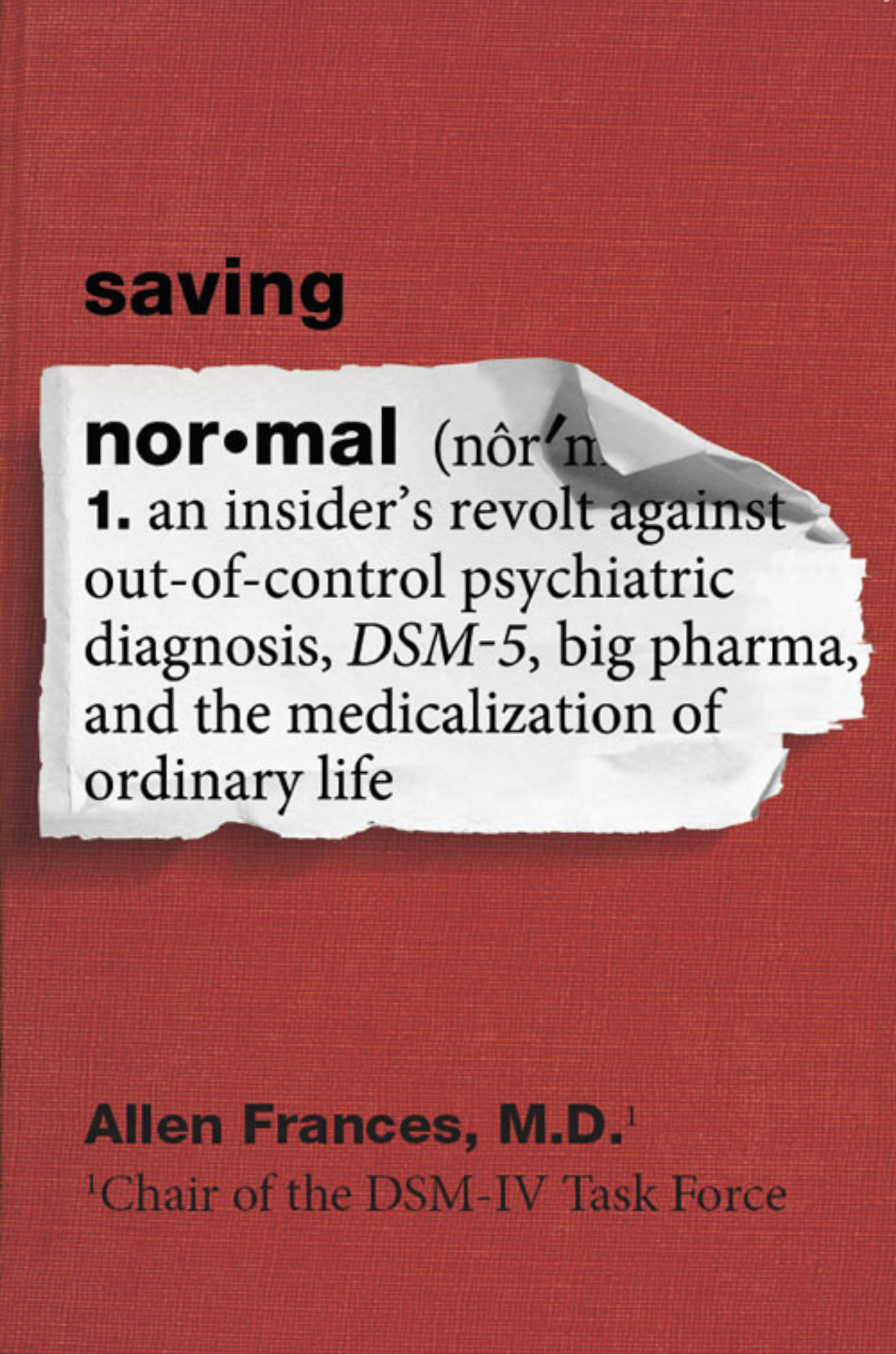Saving Normal An Insider’s Revolt against Out-of-Control Psychiatric Diagnosis, DSM-5, Big Pharma, and the Medicalization of Ordinary Life
Author: Allen Frances Publisher: New York, NY: HarperCollins. Publish Date: 2013 Status:💫
Impressions
Who Should Read It?
Nebulas
- Saving Normal CHAPTER 1. What’s Normal and What’s Not?
- Saving Normal CHAPTER 3. Diagnostic Inflation
- Saving Normal Chapter 5. Fads of the Present
Notes
Amount: 37
- Parents seek autism diagnoses for their children to acquire eligibility for school and therapeutic programs
- The word “normal” has always been elusive
- Modern medical science has struggled to develop a solid definition for “health” and “illness”
- Psychiatry has not yet been able to come up with laboratory tests for psychiatric conditions
- Psychiatric diagnosis is dependent on subjective judgement rather than empirical tests
- The cutoffs in the bell-shaped curves which psychology often relies on to define normality are determined by context
- The two standard deviation for determining high or low IQ is arbitrary and dependent on context
- Psychiatrist have expanded the percentage of mental illness to fit more people in order to expand their business
- Mental disorder and and normality are too ambiguous to distinguish between
- The ambiguity between mental disorder and normality puts into question which disorders should be included in the DSM and who receives diagnosis
- Some people believe psychiatry can find the true essence of mental disorders
- Some people take mental disorders to be restrictive myths that do not exist at all
- We should take a model agnostic perspective towards mental disorders
- Each mental disorder is defined by a precise set of symptoms, how many must be present, and their duration
- The threshold for diagnosing mental disorders are somewhat arbitrary and can be adjusted
- Psychiatry diagnostic thresholds oscillate to avoid over or under diagnosis
- Reliability and validity must be balanced when defining mental disorders
- The DSM has to prioritize reliability when defining mental disorders to prevent disagreement, which sacrifices validity
- By embracing reliability of definitional criteria, the DSM has become overreliant on using simple checklists to diagnose people
- Psychiatrists must run field trials for each new set of diagnostic criteria to prevent unpleasant surprises
- Field trails for new diagnostic criteria for mental disorders are unreliable for predicting future rates
- Field trials for diagnostic criteria for mental disorders are tested on samples of people chosen by researchers, generating better results than in real psychiatric settings
- It is much easier for psychiatrists to diagnose in a field study than in everyday practice
- Psychiatric diagnosis tends to rise when it can lead to something valuable
- Mental illness rates have increased do to adjustment in definition rather than increased distress
- Psychiatrists are drawn toward premature diagnosis in order to be reimbursed by medical insurance companies
- Spikes in mental disorder are usually due to studies who hire cheap labor with poor clinical discretion
- Before the 70s, psychiatric drugs were very risky and were only given to the sickest of patients
- During the 70s, psychiatric drugs became much less risky and were beginning to be offered to the wider temporarily distressed public
- In the late 80s and 90s, new SSRIs began to sell widely and rapidly
- After the 90s, antipsychotics began to be prescribed carelessly even to non-schizophrenics
- Drug companies will alter existing drug compounds very slightly to extend patent life
- Pharma raises revenue and extends patents by finding new markets for existing drugs
- Pharma finds its biggest market for psychiatric drugs in the worried well rather than the genuinely mentally ill
